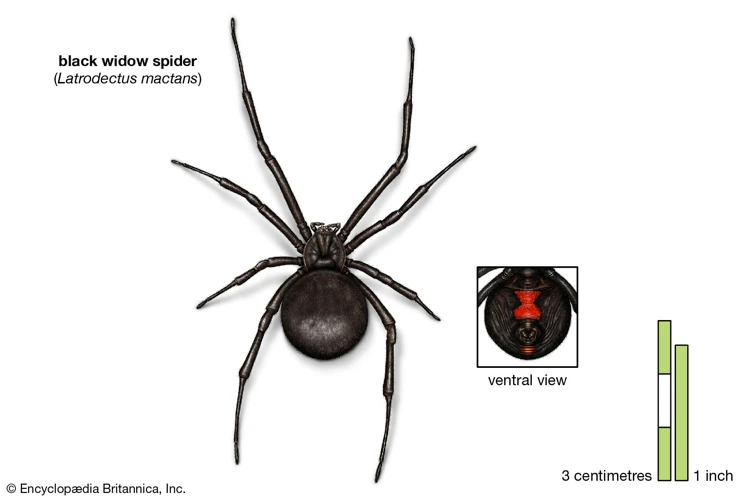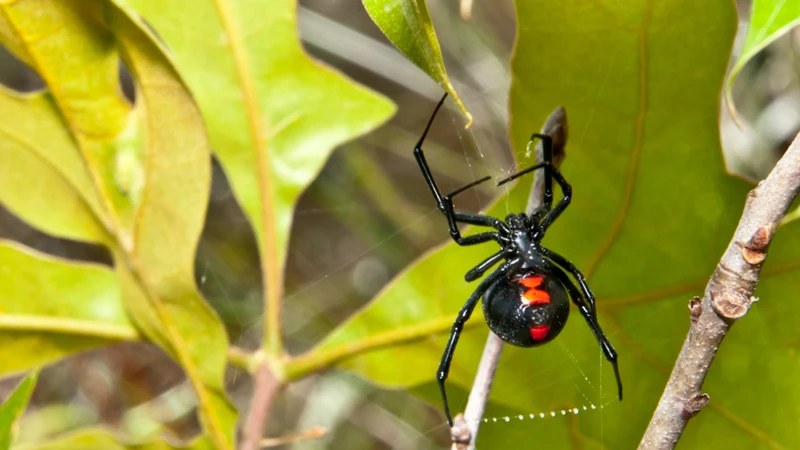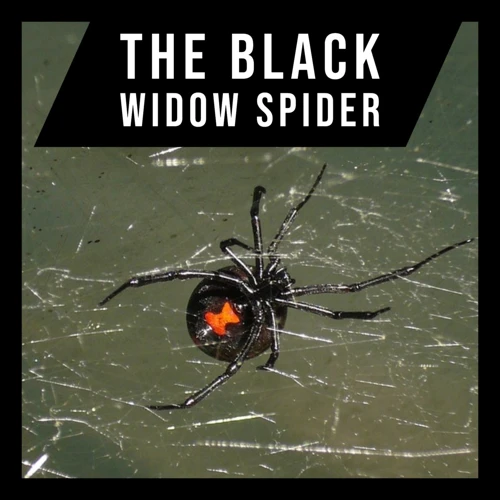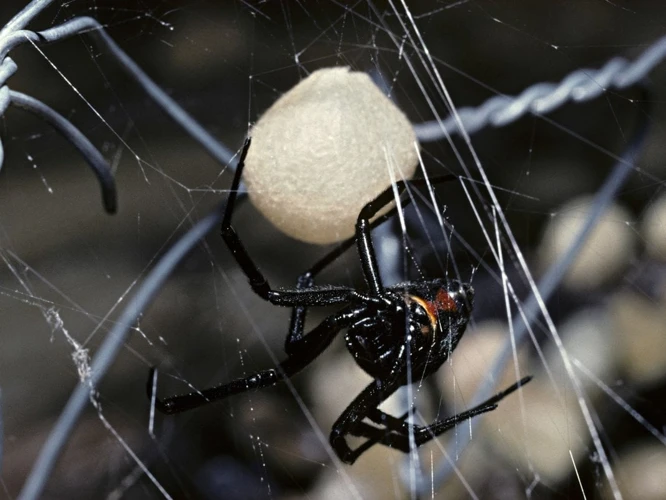Introduction

Have you ever wondered about the hatching rate of Black Widow Spider eggs? These fascinating arachnids are known for their distinctive appearance and venomous bite, but there is much more to their life cycle that meets the eye. In this article, we will explore the various factors that affect the hatching rate of Black Widow Spider eggs, from incubation duration to temperature and humidity. We will also provide insights into how to take care of spiderlings once they have hatched. So buckle up and get ready to learn more about the amazing world of these eight-legged creatures.
Background Information
Black widow spiders are a fascinating species, best known for their striking appearance and dangerous venom. However, another aspect of these spiders that is often overlooked is their method of reproduction, which includes the laying and hatching of eggs.
The hatching rate of black widow spider eggs varies depending on several factors such as:
| Factors | Description |
|---|---|
| Temperature and Humidity | Temperature and humidity levels play a vital role in determining the hatching rate of black widow spider eggs. High temperatures can cause the eggs to dry out, while low temperatures can slow down the development process. Similarly, high humidity can increase the chances of fungal growth, leading to a decrease in egg hatching rate. |
| Incubation Duration | The incubation duration of black widow spider eggs can significantly impact their hatching rate. Generally, it takes around 20 days for the spiderlings to emerge from the eggs, but this duration can vary depending on the environmental conditions. |
| Egg Fertility | The fertility of black widow spider eggs plays a crucial role in their hatching rate. If the female spider’s sperm storage organs are depleted due to excessive mating or other factors, the eggs may not develop correctly, leading to a decrease in hatching rate. |
Understanding these factors can help black widow spider breeders optimize their breeding programs and improve hatching rates.
To learn more about the hatching rate of black widow spider eggs, you can refer to the article “Egg Hatching Synchrony and Black Widow Success“.
The Life of Black Widow Spiders

As one of the most notorious spiders on the planet, the black widow spider is shrouded in myths and legends. These spiders are known for their venomous bites, distinctive appearance, and, of course, their reproductive habits. Understanding the life of black widow spiders is crucial to unlocking the mystery surrounding their egg-laying and hatching behaviors. Through discussing topics such as mating habits, egg development, and maternal care, we can begin to understand the many factors that play a role in the hatching rates of black widow eggs. For more information on the specifics of black widow egg development, check out our article on temporal changes during black widow spider egg sac.
Mating and Egg Laying
Mating and Egg Laying for Black Widow Spiders is a dangerous and complex process. The male spider needs to be very careful when approaching the female spider for mating. If the female spider is not receptive, she may attack and even eat the smaller male. Once they are both ready to mate, the male will insert his pedipalps into the female’s reproductive organs and transfer his sperm. The female can store the sperm for months, and use them to fertilize multiple batches of eggs.
After mating, the female will start producing eggs within a few days. She will create an egg sac, which is made of a tough silk material, and attach it somewhere safe. The egg sac can contain hundreds of eggs. During this time, the female will guard and protect the egg sac, which is an important part of maternal care.
It is important to note that egg cannibalism is common among Black Widow spiders, with some females eating their own eggs if they are under stress or need nutrition. Predation is also a significant factor in egg survival rates, with many animals seeing the egg sac as an easy food source. Despite these factors, many of the eggs will still hatch successfully.
If you want to learn more about Black Widow Spider Eggs, you can read about their duration of hatching in our article on Black Widow Egg Hatch Duration.
From Egg to Spiderling
When the black widow spider eggs are first laid, they are a yellowish-white color and about the size of a pinhead. As time passes, the spiderlings develop inside the egg sac. Once the spiderlings have fully formed, the eggs will hatch and the spiderlings will emerge. This process can take anywhere from 14 to 30 days, depending on the temperature and humidity in the environment.
The newly hatched spiderlings will be extremely small, often less than 1mm in length. They will be very delicate and will require special care to ensure their survival. At this stage, they are particularly vulnerable to predators, such as ants and other spiders. It is important to make sure the environment is suitable for their survival.
Once the spiderlings have emerged, they will usually stay close to the egg sac for a few days while they adjust to their new environment. During this time, they will be feeding on the remaining nutrients from their egg sac. It’s important to note that some spiderlings may turn on their siblings and engage in egg cannibalism, in which the strong prey on the weak. This behavior is common among black widow spiderlings and can limit the number of viable spiderlings produced from a single egg sac.
Maternal care is crucial for the survival of the spiderlings. The mother will provide protection and food until the spiderlings are capable of fending for themselves. However, parental investment by black widow spiders is low and the mother may abandon her offspring if conditions become unfavorable.
In the wild, many factors can affect the survival rate of spiderlings. Predation, environmental factors, and disease can all take a toll on the young spiders. However, when proper care and precautions are taken, many of these spiderlings can grow up to become fully grown black widows themselves.
Pro tip: If you want to learn more about the black widow spider eggs stage compared to other spider species, check out our article on comparing black widow egg stages to other spiders.
Factors that Affect Hatching Rate

Understanding the various factors that can affect the hatching rate of black widow spider eggs is crucial in successfully breeding these fascinating creatures. From temperature and humidity levels to incubation duration and egg fertility, the hatching rate can be influenced by numerous variables. It’s important to note that while black widow spiders exhibit impressive maternal care, they also face threats such as predation, egg cannibalism, and challenges related to egg sac placement. By examining all of these factors, we can gain a better understanding of how to provide optimal conditions for black widow spider eggs to hatch successfully. Let’s dive into the details! To learn more about the maternal care black widow spiders display towards their eggs, check out our article on parental investment in black widow eggs.
Temperature and Humidity
Managing the temperature and humidity levels is crucial to ensure successful hatching of black widow spider eggs. According to research, the optimal temperature range for spider egg incubation is between 25-30°C, and the ideal humidity level should remain around 70-80%. These ranges may vary slightly depending on the specific species of black widow spider.
| Temperature | Ideal Range |
|---|---|
| Minimum temperature | 21°C |
| Optimal temperature range | 25-30°C |
| Maximum temperature | 33°C |
Maintaining temperature and humidity levels within this ideal range is crucial. Fluctuations outside of this range can lead to deformities and death of the spiderlings (source). It is important to note that high humidity levels are critical to ensure proper spiderling development and hatching.
It is important to carefully monitor the temperature and humidity levels of the incubator or storage unit. Failure to provide the right environmental conditions can result in lower hatching rates. Factors such as air ventilation, insulation, and heat lamps must be considered when constructing the incubator or storage unit (source).
Spider egg sacs should be placed in a suitable location. Protected areas like crawl spaces or hidden areas within buildings can provide ideal temperature and humidity levels. (source)
Proper management of temperature and humidity levels can significantly improve the success rate of hatching black widow spider eggs. It is important to note that female black widow spiders can control the sex of their offspring by manipulating temperature levels during incubation (source), which can impact the future population of black widow spiders. This highlights the significance of careful parental investment in the health and development of black widow spider eggs (source).
Incubation Duration
The incubation duration of black widow spider eggs is an important factor that affects hatching rate. Black widow spider eggs typically take around 20-30 days to hatch. However, the exact duration can vary depending on various factors such as temperature and humidity.
To understand the incubation duration better, here is a table that outlines the estimated duration of black widow spider egg incubation under different temperatures and humidities:
| Temperature and Humidity | Incubation Duration |
| 75°F (24°C) and 60% humidity | 27 days |
| 80-82°F (27-28°C) and 60% humidity | 22-24 days |
| 82°F (28°C) and 70% humidity | 21 days |
| 86-88°F (30-31°C) and 60% humidity | 20 days |
| 88-90°F (31-32°C) and 60% humidity | 18-19 days |
It’s important to note that eggs kept at temperatures higher than 90°F (32°C) or lower than 70°F (21°C) may not hatch at all. Maintaining the optimal temperature and humidity is crucial for ensuring a high hatching rate.
If you’re planning to incubate black widow spider eggs, it’s recommended to monitor the temperature and humidity levels closely. This can be done using a thermometer and a hygrometer. Keeping track of the incubation duration and making adjustments as necessary can significantly increase the chances of successful hatching.
Egg Fertility
The fertility of black widow spider eggs is an important factor in their hatching rate. It is crucial to ensure that the eggs are fertilized before attempting to hatch them. Female black widows can lay as many as 750 eggs, but not all of these will be fertile.
There are several ways to determine whether an egg is fertile or not. One way is to examine the shape and color of the egg sac. Fertile eggs will have a more rounded shape and a darker color than unfertilized eggs. Another way to determine fertility is by using a microscope to examine the embryos inside the egg.
It is important to note that fertilization can only occur if the female has mated with a male. Females can store the sperm from one mating for several months and use it to fertilize multiple egg sacs. However, if the female has not mated or if the stored sperm has lost its viability, the eggs will not be fertile.
To increase the hatching rate of black widow spider eggs, it is important to ensure that the females are mating and that the stored sperm is viable. This can be accomplished by providing optimal environmental conditions and a healthy diet for the spiders.
Factors that can affect egg fertility:
- Age of the female
- Diet and nutrition
- Stress and environmental factors
- Presence of males for mating
- Quality and quantity of stored sperm
By understanding and addressing these factors, you can increase the chances of having a high hatching rate for black widow spider eggs. However, it is important to exercise caution and seek professional guidance when attempting to hatch these spiders due to their venomous nature.
How to Take Care of Spiderlings
Caring for Black Widow spiderlings can be a challenging and delicate process. However, with the right precautions and knowledge, you can ensure that your spiderlings thrive and grow into strong and healthy adult spiders. In this section, we will explore the essential steps involved in taking care of Black Widow spiderlings, including feeding and housing requirements, and environmental factors that affect their development. So, let’s dive right in and learn how to give your spiderlings the care they need to grow into formidable predators in their own right.
Feeding
Black widow spiderlings have a delicate build and require a specific diet for optimal growth and development. The staple diet of a black widow spiderling consists of small insects such as fruit flies, pinhead crickets, and micro mealworms. These small insects provide the necessary nutrients for the spiderlings to grow and eventually transition to a spider’s typical diet.
It is essential to provide freshly killed prey for the spiderlings as they do not possess the venomous capability to subdue live prey. Spiderlings should be fed once every day or two, depending on their age and size. Overfeeding can lead to health problems in spiderlings, so it’s important not to overdo it.
One crucial factor to consider when feeding black widow spiderlings is the size of the prey. The size of the prey should not be too large for the spiderling as they can’t handle it, and it could lead to injury or death. Also, it’s vital to take into account that some spiderlings may have trouble eating and digesting their food and may need a helping hand.
In the case where the spiderling can’t feed itself, the owner can help by using a small paintbrush or forceps to gently place the prey in front of the spiderling. Be sure not to use fingers to avoid harming the spiderling or getting bitten.
It’s important to note that over time, spiderlings will grow and will require slightly larger prey. As they get older, make sure to adjust the size of the prey accordingly. With proper feeding, black widow spiderlings can grow into strong and healthy adult spiders.
Housing and Environment
Creating the right housing and environment for Black Widow spiderlings is important for their growth and survival. Below are some tips on how to properly house and care for your baby spiders.
Spiderling enclosure: A small container or terrarium is an ideal home for your spiderlings, with a size of around 10 gallon or less. The enclosure should have a secure top to prevent escape and good ventilation. You can cover the top with mesh to ensure proper air circulation.
Substrate: Choose a substrate that can hold moisture but is not too wet, such as vermiculite or coconut coir. To prevent mold, change the substrate every two to three weeks.
Temperature: Black widow spiderlings prefer a temperature range between 75°F to 85°F. Use a thermometer to monitor the temperature of the enclosure and adjust it accordingly.
Humidity: Spiderlings need a high level of humidity, around 80%. You can keep the humidity level high by misting the enclosure with water regularly, but be careful not to make the substrate too wet.
Feeding: Spiderlings eat small prey, like fruit flies, pinhead crickets or flightless fruit flies. Offer them food once or twice a week and remove any uneaten prey to prevent mold and bacteria growth.
Light: Black Widow spiderlings don’t require special lighting, but exposure to natural light or a 12-hour cycle of artificial light and darkness should suffice.
Handling: Black Widow spiderlings are fragile and can be dangerous. Their venom might not be potent, but it can still be harmful to humans. Avoid handling the spiderlings and keep a safe distance from them.
Following these guidelines, you can provide a comfortable and suitable environment for your Black Widow spiderlings, contributing to their development and growth.
| Spiderling Enclosure | Substrate | Temperature | Humidity | Feeding |
|---|---|---|---|---|
| A small container or terrarium with secure top and good ventilation | Vermiculite or coconut coir | 75°F to 85°F | Around 80% | Small prey: fruit flies, pinhead crickets, or flightless fruit flies |
Conclusion
After exploring the hatching rate of black widow spider eggs, it’s become apparent that there are several factors that can greatly affect the successful incubation of these eggs. Temperature and humidity play a major role, as the ideal conditions for hatching are quite specific. Maintaining a consistent temperature and humidity level is crucial in order to ensure the best possible hatching rate.
Additionally, proper care of the mother spider and her eggs can greatly impact the overall success of the hatching process. Ensuring that the mother is well-fed and given the proper environmental conditions will increase the chances of successful hatching.
It’s important to note that incubation duration is also a significant factor to consider, as black widow spider eggs can take anywhere from 20 to 90 days to hatch. Patience is key when attempting to hatch these eggs, as premature interference may result in the failure of the hatch.
Finally, the fertility of the eggs themselves is crucial, as any defects or abnormalities in the eggs can prevent them from hatching successfully. Proper care and attention should be given to the mother spider to ensure that the eggs are of the highest quality.
Overall, successfully incubating black widow spider eggs requires careful attention to detail and a deep understanding of the factors that affect the hatching rate. By properly caring for the mother spider, maintaining ideal temperature and humidity levels, and waiting patiently for the eggs to hatch, the chances of a successful hatch can be greatly increased.
Frequently Asked Questions
How many eggs does a black widow spider typically lay?
On average, a black widow spider can lay around 250 eggs in a single egg sac.
What is the size of a black widow spider egg?
A black widow spider egg is approximately 1/3 of an inch in size, with a round shape and a glossy texture.
What is the hatching rate of black widow spider eggs?
The hatching rate of black widow spider eggs can be variable, with some studies indicating a rate of around 50-70%.
What factors affect the hatching rate of black widow spider eggs?
Temperature, humidity, incubation duration, and egg fertility can all impact the hatching rate of black widow spider eggs.
At what temperature do black widow spider eggs hatch?
Black widow spider eggs typically hatch at temperatures between 70-90℉.
How long does it take for black widow spider eggs to hatch?
The incubation period for black widow spider eggs ranges from 20 to 30 days.
Do black widow spiderlings need a specific type of food?
Yes, black widow spiderlings require a diet of small insects such as fruit flies, pinhead crickets, and wingless fruit flies.
What is the ideal environment for housing black widow spiderlings?
The ideal housing for black widow spiderlings is a container with small air holes, a substrate of moist vermiculite, and a temperature range of 75-85℉.
Can you keep black widow spiders as pets?
While it is possible to keep black widow spiders as pets, it is not recommended due to their venomous nature and potentially dangerous bites.
What should you do if you are bitten by a black widow spider?
If bitten by a black widow spider, seek medical attention immediately. Symptoms can include muscle pain and spasms, nausea, and respiratory issues.







